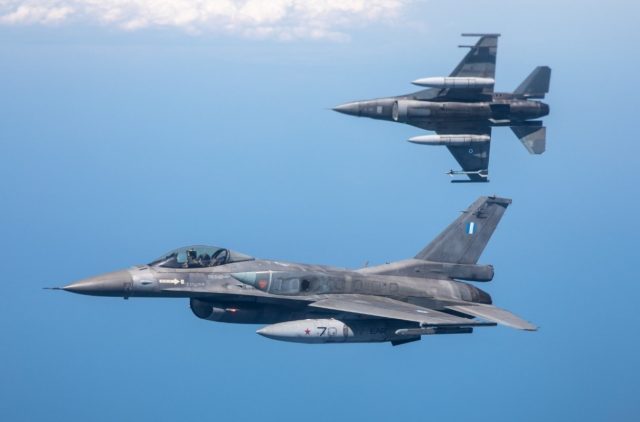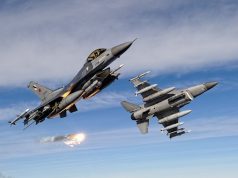NATO air and maritime forces completed an air defense exercise (ADEX) in the Black Sea on July 2 as a Royal Navy destroyer and a Dutch Navy frigate were leaving the region after an eventful stay.
The exercise provided an opportunity to practice air-maritime communications and build stronger relationships between allies, NATO said.
Fighter aircraft from the Greek, Romanian and Turkish air forces, a NATO AWACS, a Romanian C-27 transport aircraft, a Turkish military patrol aircraft and three frigates from the Standing NATO Maritime Group 2 (SNMG2) took part in the evolution. Italian Navy FREMM frigate Virginio Fasan, SNMG2 flagship, was accompanied by the Romanian frigate Regina Maria and the Turkish frigates Barbaros. SNMG 2 forces are transiting across the Black Sea and will take part in exercise Sea Breeze 2021 after the ADEX.
NATO assets carried out the drill after Russian Su-30SM fighter planes harassed the Royal Netherlands Navy air defense frigate HNLMS Evertsen in the Black Sea late June. The Dutch defense ministry shared photos of the Russian fighters buzzing HNMLS Evertsen while it was in international waters south-east of Crimea at the time of the incident.
Russian media reports also tried to claim the country’s military assets had dropped bombs in the vicinity of Royal Navy destroyer HMS Defender, which was operating in the region with the Dutch frigate. The UK defense ministry quickly denounced the Russian claims, saying no bombs or warning shots had been fired at HMS Defender.
Black Sea ADEX
The air-maritime integration training demonstrated NATO’s capabilities, with ships and aircraft operating off the Romanian coast.
While initially Turkish Air Force F-16 fighters simulated attacks on the NATO ships which trained defense drills against these attacked, the Greek and Romanian F-16s, in a separate event, conducted similar training maneuvers with the Greek fighters attacking the ships which responded in a joint manner with the Romanian fighters. Subsequently, the Greek and Romanian fighters conduct air-to-air combat drills.
“Overall the air-maritime integration training demonstrates NATO’s capabilities, readiness and resolve to protect allied populations; with our ships and aircraft peacefully operating off the Romanian coast we also assure the allies in the region,” said Allied Air Command Deputy Chief of Staff Brigadier General Andrew Hansen.
“Our jets are unarmed to enable maximum training benefit and allowing for interoperability among the four allies’ fighters,” he added.
“We have clear command and control arrangements and strict rules of engagement in place that every participant knows. These ensure that we conduct the training in a responsible and de-escalatory manner while still showing a credible and ready presence of NATO assets in the region,” said Combined Air Operations Centre Torrejon Commander, Lieutenant General Fernando de la Cruz.



























